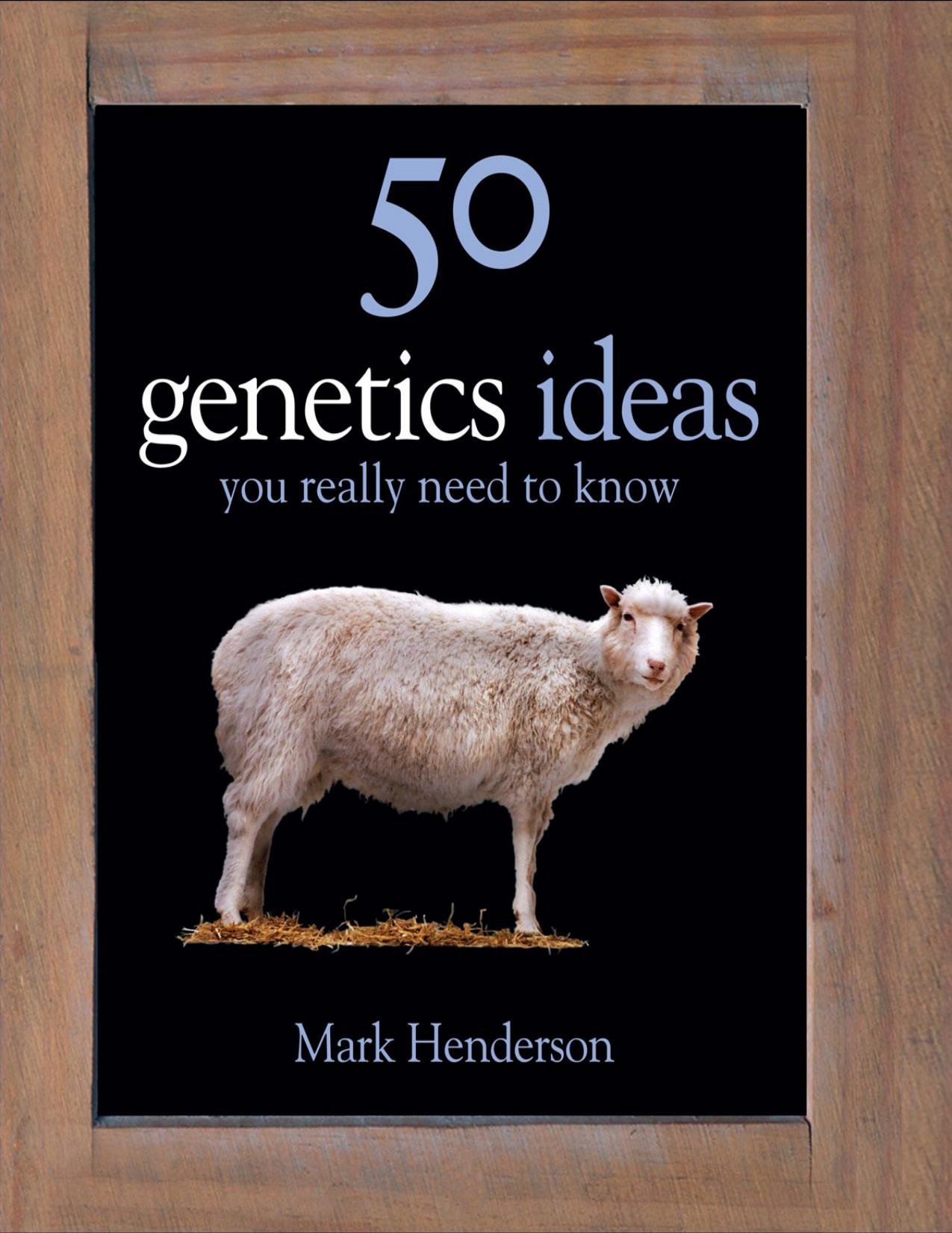50 Genetics Ideas You Really Need to Know by Mark Henderson

Author:Mark Henderson [Henderson, Mark]
Language: eng
Format: epub, pdf
Publisher: Quercus
Published: 2013-10-01T16:00:00+00:00
26 Genetic genealogy
Spencer Wells, director of the Genographic project: “The greatest history book ever written is the one hidden in our DNA.”
Though membership of the Jewish community is passed on through the female line, orthodox and conservative traditions give special status to a group of men known as the kohanim. In the Book of Exodus, God conferred the title of kohen on Aaron, the high priest and brother of Moses, as an “everlasting office” that would be passed on to all his heirs in the male line. Every modern kohen thus claims to be a direct male descendant of Aaron, a member of a patrilineal priestly caste who is given particular responsibilities during acts of worship.
In the mid-1990s, a Canadian doctor named Karl Skorecki, who is a kohen, realized that if all kohanim indeed have a common ancestor, albeit more than 3,000 years ago, they should share genetic similarities. The Y chromosome—the package of DNA that determines male sex—is passed from father to son. Could Aaron’s Y chromosome, Skorecki wondered, be preserved in today’s kohanim?
To find out, he approached Michael Hammer, a geneticist at the University of Arizona who researches the Y chromosome. The pair recruited 188 Jewish men, who gave a sample of their DNA and details of their Jewish heritage. The results were remarkable. Of the 106 who identified themselves as kohanim, 97 shared an array of six genetic markers on the Y chromosome. Most really had a common male ancestor in the distant past. A genealogical tradition had been confirmed by molecular genetics.
Gene trees Genetic genealogy has since become big business. For a fee of a few hundred pounds, dozens of companies will now test your DNA to assess your ancestry. The most useful tool, for men at least, remains the Y chromosome. As we saw in the last chapter, this is not scrambled by recombination in every new generation. Like Anglo-Saxon surnames, it thus tumbles down the male line more or less intact. By looking at its mutation rate, scientists can place men into groups who share a long-dead male ancestor.
There are 18 broad Y-DNA clans or “haplogroups,” the origins of which have been traced to particular geographical regions. Haplogroups A and B are exclusively African, haplogroup H originated in the Indian subcontinent, and haplogroup K is peculiar to the Aborigines of Australia and New Guinea. Many can be broken down into narrower subgroups. R1b is most common among European men, while the kohanim belong to J1 and J2. Aaron, it seems, may have lived sufficiently long ago for his male line to have split in two.
Crusaders and Muslims
Historical events have often left a genetic legacy that is visible in the DNA of people alive today. A recent study of modern Lebanese has revealed that a disproportionate number of Christian men have a Y chromosome that is clearly of Western European origin. This was probably carried to the region by the Crusaders between the 11th and 13th centuries, and has since been passed on by the descendants of those who settled in the region.
Download
50 Genetics Ideas You Really Need to Know by Mark Henderson.pdf
This site does not store any files on its server. We only index and link to content provided by other sites. Please contact the content providers to delete copyright contents if any and email us, we'll remove relevant links or contents immediately.
| Fossils | Game Theory |
| Genetics | Molecular Biology |
| Organic | Paleontology |
Sapiens: A Brief History of Humankind by Yuval Noah Harari(13041)
Sapiens by Yuval Noah Harari(4531)
Homo Deus: A Brief History of Tomorrow by Yuval Noah Harari(4273)
Pale Blue Dot by Carl Sagan(3997)
Origin Story: A Big History of Everything by David Christian(3133)
Livewired by David Eagleman(3117)
Brief Answers to the Big Questions by Stephen Hawking(2873)
Inferior by Angela Saini(2829)
Origin Story by David Christian(2677)
The Evolution of Beauty by Richard O. Prum(2551)
Signature in the Cell: DNA and the Evidence for Intelligent Design by Stephen C. Meyer(2497)
The Gene: An Intimate History by Siddhartha Mukherjee(2489)
Aliens by Jim Al-Khalili(2376)
How The Mind Works by Steven Pinker(2207)
Sex at Dawn: The Prehistoric Origins of Modern Sexuality by Ryan Christopher(2148)
From Bacteria to Bach and Back by Daniel C. Dennett(2146)
A Short History of Nearly Everything by Bryson Bill(2131)
Endless Forms Most Beautiful by Sean B. Carroll(2080)
Who We Are and How We Got Here by David Reich(2057)
